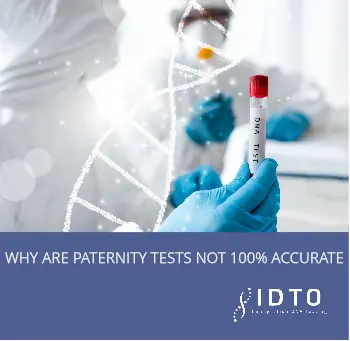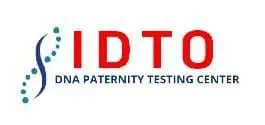
Why are paternity tests not 100% accurate?
One of the most frequently asked questions we are asked is, Can a paternity test result be 100% accurate? This is a great question. Any person who has taken a paternity test recently or in the past knows their DNA result states the probability of paternity is 99.99% or higher if they are the biological father of the child.
The reasons for your paternity test results not reflecting 100% accuracy have more to do with statistical calculations.
How to best achieve an accurate paternity test result?
It is recommended that the mother of the child be tested. The reason for recommending the mother’s involvement is to increase the accuracy of your DNA test. Each child inherits 50% of its genetic profile from each parent.
If the mother is tested her genetic contribution can be identified within the child. Doing this allows the lab to better analyze the remaining 50% of the child’s genetic profile with better accuracy and efficiency to determine the probability of paternity or if the tested man is excluded.
Please keep in mind, although the mother being tested can increase accuracy it does not ensure 100% accuracy.
Inconclusive Results:
If for any reason the mother is unavailable to be tested. A paternity test can still be performed between alleged father and child accurately.
It is important to note, it is possible for a result to be inconclusive. There are several reasons why something like this may occur. For example, Insufficient DNA collected or a contaminated sample, etc.
Each case is different and unfortunately, there is no universal answer that can explain every case the same way. This is why choosing a professional DNA testing company like IDTO with experienced and knowledgeable DNA sample collectors helps to decrease the possibility of DNA sample collection errors.
Reasons for inconclusive results:
Insufficient DNA: This is the most common reason. Not enough quality DNA in the samples can make it difficult to amplify and analyze specific markers accurately, leading to an inconclusive result. This can happen due to:
- Improper collection: Swabbing too gently, using contaminated materials, or not collecting enough sample can limit the DNA yield.
- Degraded DNA: Old samples, exposure to heat or moisture, or improper storage can damage DNA, making it unusable.
- Low cell count: Samples from newborns or individuals with certain medical conditions may have lower cell counts, leading to less DNA.
Mixtures: If the tested sample contains DNA from multiple individuals, it can be difficult to determine the specific source of each genetic marker, leading to an inconclusive result. This can occur in:
- Accidental contamination: If samples touch or environmental DNA contaminates them.
- Technical errors: While rare, lab equipment or analysis issues can also contribute. Highlighting the importance of retesting or seeking guidance from the DNA testing company of your choice.
Rare mutations: In rare cases, a child may inherit a unique genetic mutation not present in the alleged father or the reference database. This can make it challenging to establish paternity definitively.
Remember, getting inconclusive results don’t necessarily mean the test is wrong; it just signifies insufficient information for a definitive answer. Depending on the situation another sample collection can be performed for re-testing.
Conclusion:
In summary, paternity tests are not 100% accurate because accredited labs do not have access to every human being on planet earth’s DNA profile. The probability of paternity for a man who is the biological father of a child is 99.99% and higher. Please keep in mind, that inconclusive results does not mean something is wrong with the testing process, it just indicates insufficient information.
It is important that you use DNA Testing companies like IDTO DNA Testing Center who offer AABB accredited DNA Testing services and have experienced DNA sample collectors in our network. Therefore allowing for minimal errors to occur with your sample collection process and laboratory testing protocols.

